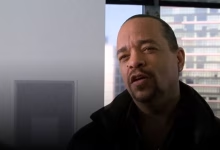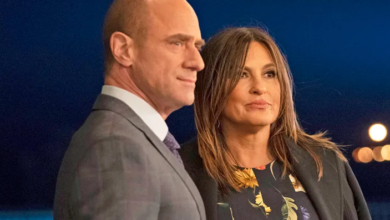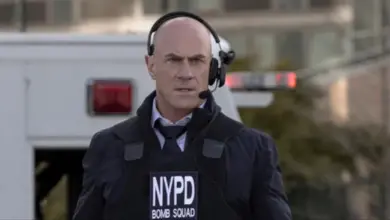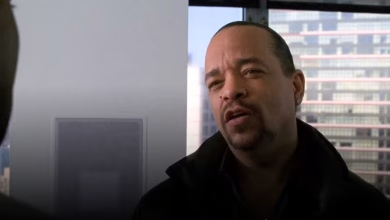Is Law & Order: SVU Leaving This Controversial Story Arc Behind?
Season 25 of Law & Order: SVU disappointed many of the show’s fans, but is it moving past its most disliked story arc?
With Law & Order: SVU celebrating a quarter-century of syndication, Season 25 was billed as a landmark moment for the series. This season promised to bring back memorable old cases and faces, propel Captain Olivia Benson’s story forward, and deliver unforgettable storytelling. Billed as a celebration of Benson and her decades on the force, fans were ready for a memorable season.
But by the finale, audience goodwill had run a little thin, especially when SVU brought back one of the most diverse arcs from the start of the shortened season: Benson’s unrelenting obsession with the kidnapping of Maddie Flynn. It’s no secret that his storyline has not been a fan favorite, but with the final scenes of Season 25 complete, many viewers are asking the same question: is SVU finally closing the Maddie Flynn arc for good?
Breaking Down Benson & Maddie Flynn’s Season 25 Arc

The 25th season of Law & Order: SVU begins when sixteen-year-old Maddie Flynn is kidnapped from a store. However, there was an added twist: Benson, who had been driving by the scene, saw Maddie in the front seat of the van with her kidnapper. Although the call had not yet come through about Maddie’s kidnapping and Benson had no idea who Maddie was, Benson felt that something was off about the girl she saw. When Benson was called to the scene of the kidnapping shortly after, she saw a picture of Maddie and realized she was the girl in the van. This kickstarted a cycle of guilt, making Benson obsessively invested in finding and rescuing Maddie.
In the ensuing search, Benson finds another kidnapping victim, prompting Maddie’s mother, Eileen, to confront Benson at a press conference and pushing the captain further into a Maddie-obsessed spiral. As the search progresses, Benson becomes more and more personally involved. She finds the kidnapper’s vehicle, confronting and scaring an uninvolved driver. Under the seat, Benson discovers Maddie’s friendship bracelet, which she keeps and wears as a reminder.
After many episodes of searching, Maddie’s story seemingly picked up steam to its apparent conclusion. Benson discovers that the girl had been traded by her kidnapper, forced to curl her hair, dressed to resemble a boy, and drugged repeatedly to keep her from escaping. At one point, Maddie regained enough clarity to write a note to a passenger asking for help, asking them to call the NYPD. This kickstarted the final search and helped the Special Victims Unit reunite Maddie with her parents.
But Maddie’s story didn’t end there. Following her rescue, she relayed that her abductor had sexually assaulted her, kicking off a new layer of criminal proceedings. Things got complicated, though, when she admitted to Benson and ADA Carisi that she had consented to the kissing and touching. At the trial, though, the jury realized that she had been a scared and drugged victim, so Maddie’s assailant was found guilty.
Following the trial, Benson took Maddie to see her psychologist, a specialist in eye movement desensitization and reprocessing (EMDR) therapy. As Benson had been seeing this doctor since the start of the season, she realized Maddie would need this type of more intensive therapy to get past her trauma. Then, in the finale episode, Benson attends Maddie’s sixteenth birthday party where she makes the instantly controversial choice to give Eileen her compass necklace — the one gifted to her by Detective Elliot Stabler in the Law & Order: Organized Crime season finale last year — to guide her through her own healing.
Why the Maddie Flynn Arc Didn’t Really Work

On the surface, a multi-episode arc can often work really well to bring a larger focus to a story. But with this billed as a milestone season for Law & Order: SVU, viewers hoped that any time devoted to an arc would be more substantive. However, as Season 25 continued, many fans were left asking the same question: out of all the cases Benson has worked on, does she become so personally involved in the Maddie Flynn case? While Benson seeing Maddie moments after her kidnapping added a personal layer, it never really gelled. After all, there are so many more cases where the victims have been even more personal or who have gone through even
Further, the so-called season of Benson actually had her acting as her most out-of-character yet. The intelligent, steadfast police captain was suddenly acting more like her ex-partner, Stabler, and disregarding all kinds of procedures and acting borderline unethically. Whether she was keeping Maddie’s friendship bracelet recovered from her abduction vehicle or becoming emotionally involved with Maddie’s parents, she crossed professional and moral lines in her singular obsession.
However, it was Benson’s appearance in the finale of Season 25 that really hit a nerve with fans. Not only did it feel like Maddie was dragged back in, shoehorning a momentous season with just her story again, but when Benson gave her compass necklace, a meaningful and heartfelt gift from Stabler meant to guide her to happiness, to Maddie’s mom, it sent a ripple of disappointment throughout the fanbase.
Fans online have been vocal about not loving the Maddie Flynn arc. But even more so, there is a general sense of dismay at what that arc took away. What happened to the crossover episodes with Organized Crime? What happened to highlight Benson’s past work? What happened to her blossoming and once-again-forgotten relationship with Stabler? This season, Benson acted wildly out of character with her singular focus on Maddie, but by bringing Maddie and her family back at the very end, is it finally closing that arc for good?
What Season 26 Could Do Better
As SVU moves into Season 26, it’s a perfect opportunity to pick up and expand on what’s worked well in the past. Traditionally, one-off cases that leave a mark tend to be fan favorites. When a mystery is presented in a compelling or original way, viewers are invested. Similarly, tight storytelling — rather than dragging out an arc — often does a plot more justice.






